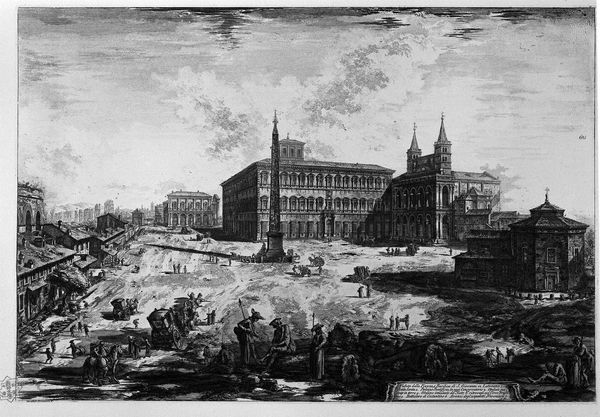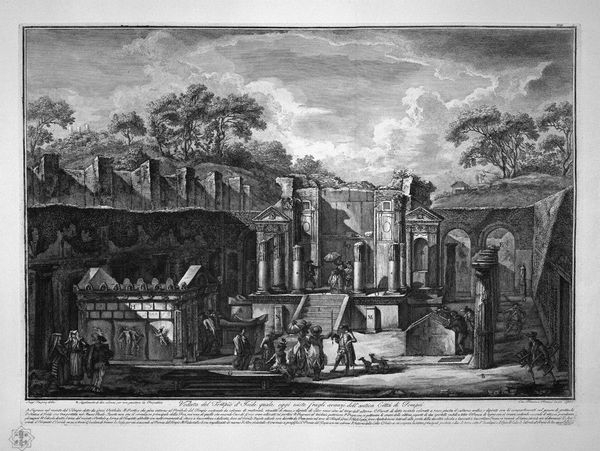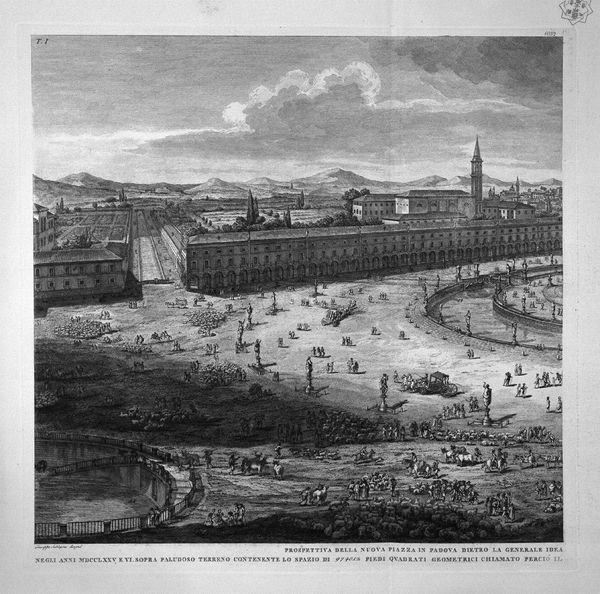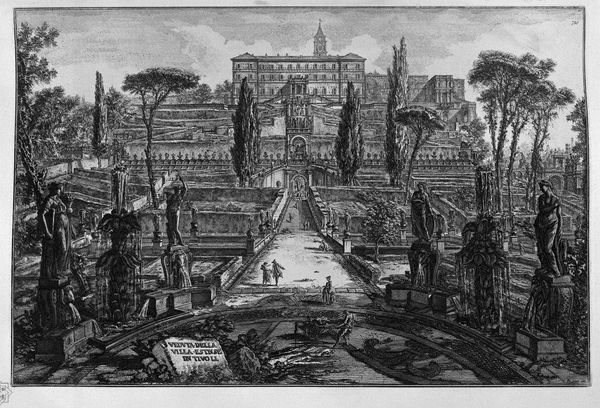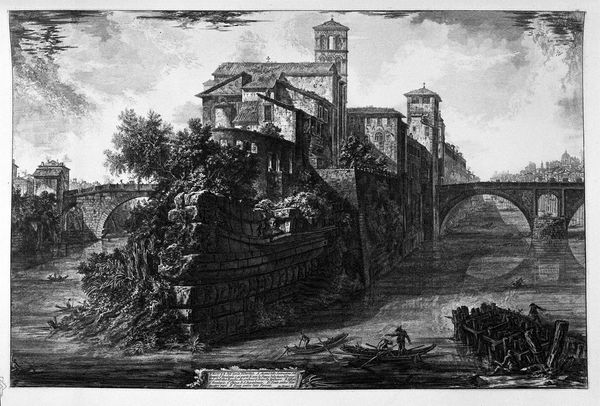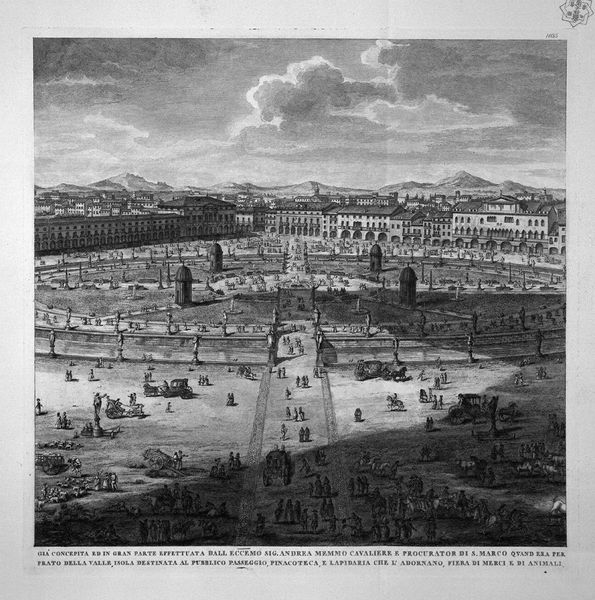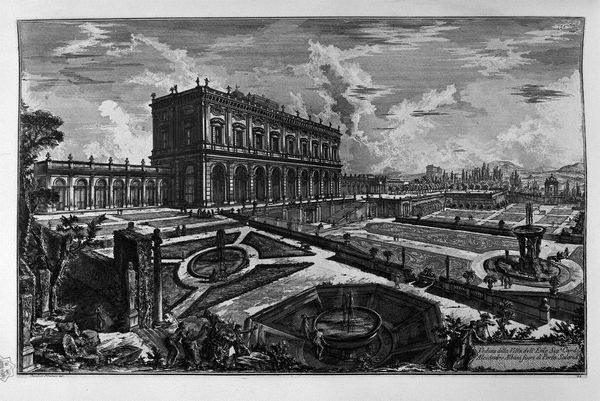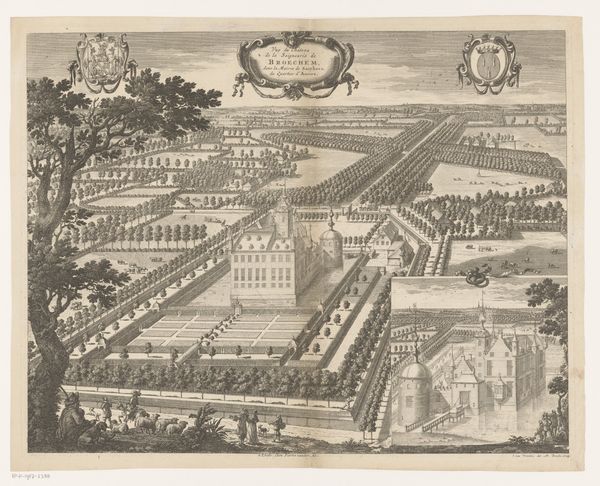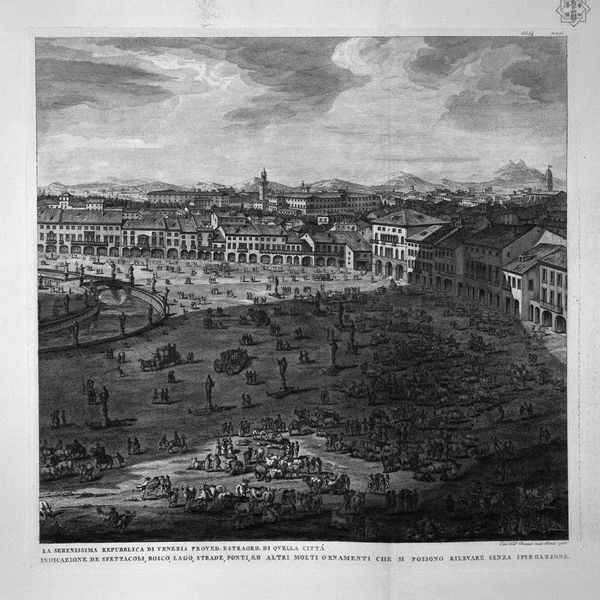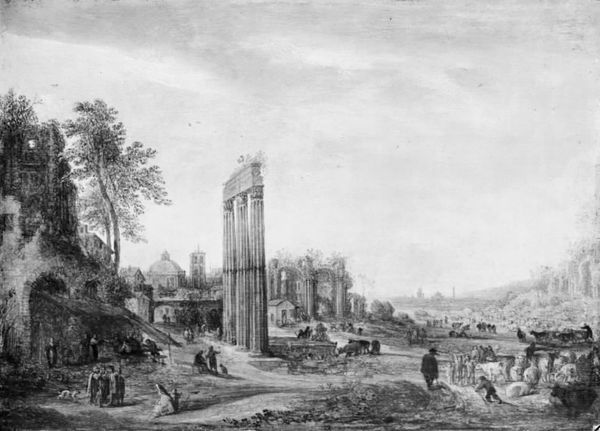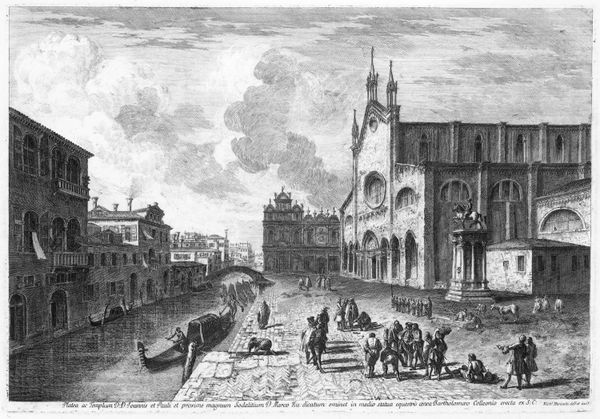
View of the Villa Albani, Alessandro E m Mr. Card outside the Porta Salaria
0:00
0:00
print, etching
#
baroque
# print
#
etching
#
landscape
#
charcoal art
#
column
#
cityscape
Copyright: Public domain
This engraving by Giovanni Battista Piranesi offers a view of the Villa Albani, where nature and artifice intertwine. The formal gardens, with their symmetrical layouts and orderly rows of trees, speak to a human desire to control and organize the natural world, an impulse echoing through millennia from ancient Egyptian gardens to the Renaissance villas. Notice how the artist uses perspective to emphasize the grandeur of the villa and its surroundings. This technique invites the viewer to imagine themselves within this constructed paradise. The villa and gardens are not merely aesthetic arrangements; they are stages upon which human dramas of power and leisure are enacted. Consider the recurring motif of the garden itself. In antiquity, the enclosed garden symbolized paradise, a refuge from the wild. Over time, this symbol evolved, often representing a space of love, contemplation, or even temptation, as seen in countless paintings and literary works. The human presence in Piranesi's print, though small, is crucial. They are the custodians and inhabitants of this cultivated space, their lives intertwined with the symbolic weight of their surroundings. We are left contemplating the cyclical return of these symbols and their ever-evolving meanings.
Comments
No comments
Be the first to comment and join the conversation on the ultimate creative platform.
